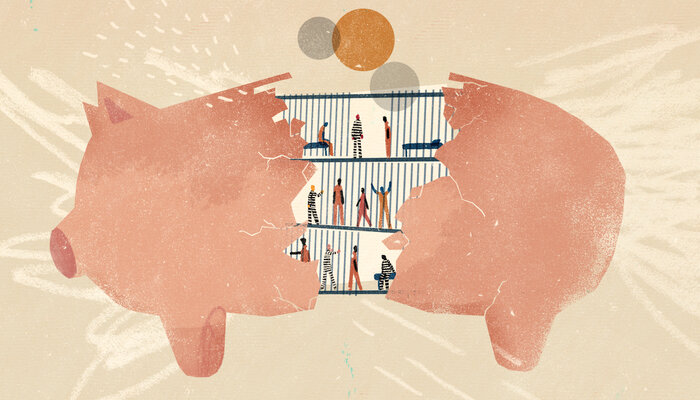We’re now living in a moment when elected leaders on both sides of the aisle think excessive incarceration with scant public safety rationale is bad policy. To reduce bloated prisons and jails — housing upwards of 2.2 million people — many communities across the country are allowing people to remain in the community instead of behind bars. This includes people awaiting trial, sentenced to probation, or released on parole. Today, nearly 4 million people are under some form of correctional control in the community.
When people are placed under community supervision as a condition of being out of jail or prison, local governments sometimes will put a GPS monitor on their body (usually their ankle or wrist) to constantly track their whereabouts 24 hours a day. For people awaiting trial, this technology, commonly known as electronic monitoring, is designed to ensure people show up to court. And for people who have been convicted of a crime and whom governments have determined pose a higher risk of reoffending, electronic monitoring may allow them to serve their sentence in the community and avoid a term of imprisonment. In either case, electronic monitoring offers more freedom of movement than prisons and jails while aiming to reduce recidivism and advance public safety.
Before Covid-19, on any given day, the United States used electronic-monitoring devices on more than 125,000 people, and that figure doesn’t include over 38,000 more outfitted with ankle monitors by U.S. Immigration and Customs Enforcement. These numbers have likely risen due to Covid-19 early-release programs.
Yet innovative as this approach may be, it’s far from perfect. Localities that use electronic monitoring often contract with for-profit firms to supervise people. These monitoring services, though cheaper than incarceration, are still expensive. But rather than charge the governments, in most municipalities that use electronic monitoring, these companies charge the people being supervised.
And there’s the problem. Fees tied to this round-the-clock surveillance are often steep, if not overwhelming. Normally the rates range from $150 per month to an unconscionable $900 per month. Sometimes it’s as high as $1,200, which can easily exceed a person’s monthly rent. None of that includes the startup fee, which can be up to $200. And in some instances, if a person loses or damages their tracking device, they will be required to pay additional costs that can amount to hundreds of dollars.
Given the lower incomes of most people entangled within the criminal legal system, many struggle to keep up with these astronomical fees which can be an insurmountable obstacle. Indeed, in some instances, a person facing the choice of electronic monitoring or incarceration might well choose incarceration because it’s cheaper.
And even if a person agrees to electronic monitoring to remain in the community, they can still land behind bars because of it. People on electronic monitoring must follow numerous rules that are often onerous, broad, and ambiguous. These restrictions cover a wide range of areas, including employment, curfew, and exclusion zones. They even extend to device charging and interactions with friends, family, and community members.
The rules can make it difficult for people to find and keep jobs. The problem is so bad that to cover the costs of their monitoring fees, some people have even purportedly sold their possessions and blood plasma. And if those on electronic monitoring slip up and fail to follow any one of the dizzying number of rules, they risk punishment, including incarceration. So it’s perhaps not surprising that technical rule violations rather than new criminal offenses often drive reincarceration.
So what do we do?
A recent Brennan Center report proposes some solutions. The clearest one is to require local governments, not people being supervised, to pay fees associated with monitoring. Eliminating these fees for people under supervision will help to reduce the likelihood of being trapped in cycles of debt and incarceration. Some localities — like San Francisco County, California, and Baltimore County, Maryland — have already taken this step.
The goal of community supervision should be helping people to be productive members of our society by allowing them to continue working, promoting community engagement, and by enabling them to maintain relationships with those closest to them.
People awaiting trial or attempting to reenter society shouldn’t have to deal with the unnecessary financial impediments that come with electronic monitoring. In our quest to reduce the sheer volume of people in prisons and jails, aiming to dismantle mass human confinement, we must also ensure that alternatives to incarceration do not do harm as well.









